We often look for warm weather and wildflowers as the first marker of spring. But there’s another sign of spring in the air: birdsong! While some birds stay in New Hampshire all winter, others are just now returning to us after wintering further south. Here are a few migrants you can expect to see around New Hampshire now! We’ve included recordings of their calls as well as pictures–if you’re interested in birding, learning even just a few bird calls is a great way to get started.
Chipping Sparrow
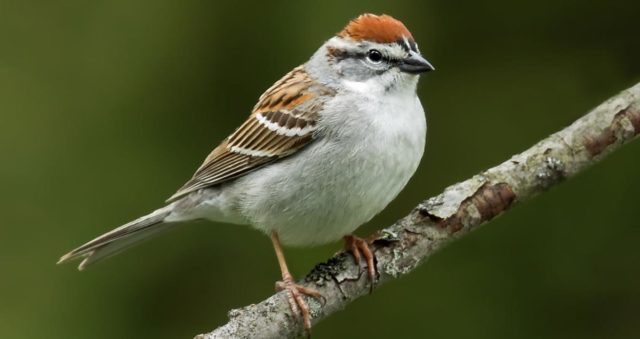
In the spring, chipping sparrows develop a vibrant breeding plumage: a red cap, white stripe on the front of the head, and then a dark stripe through their eye. Keep an eye out for these birds in shrubby fields or grassy clearings in the forest. They are not shy and can be fun to watch foraging on the forest floor. Chipping sparrows migrate at night, so you may hear their piercing flight call on clear spring nights.
Pine Warbler
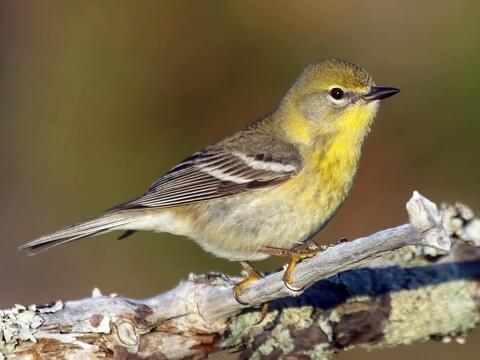
Warblers can be difficult to spot, but they will reward a sharp ear and a keen eye. Adult males in breeding plumage can be a very bright yellow, with white stripes on their grey wings. True to their name, these small birds spend a lot of time high in the pine trees, looking for insects and seeds for their next meal. Listen for their trilling song next time you’re exploring a pine forest.
Tree Swallow

If you spot small, iridescent birds swooping over water or fields, those may be tree swallows. These birds catch insects in flight, gobbling up flies, beetles, and other flying insects, as well as seeds, berries, and mollusks. You can often see them hunting in flocks. They nest in tree cavities, though you may also see them using bluebird houses. Their three part call is divided into the chirp, the whine, and the gurgle.
Hermit Thrush
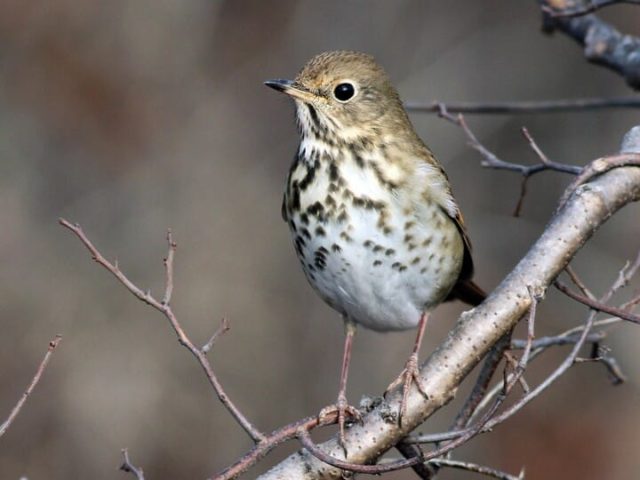
The hermit thrush can be hard to spot, thanks to its brown color and mottled belly. However, the hermit thrush is famous for its song, which is often described as flute-like. It opens with a single note, then repeats a descending phrase at different pitches. Next time you’re in the forest, listen for the hermit thrush song–maybe it will even inspire a poem for you, as it did for Walt Whitman.
Eastern Phoebe
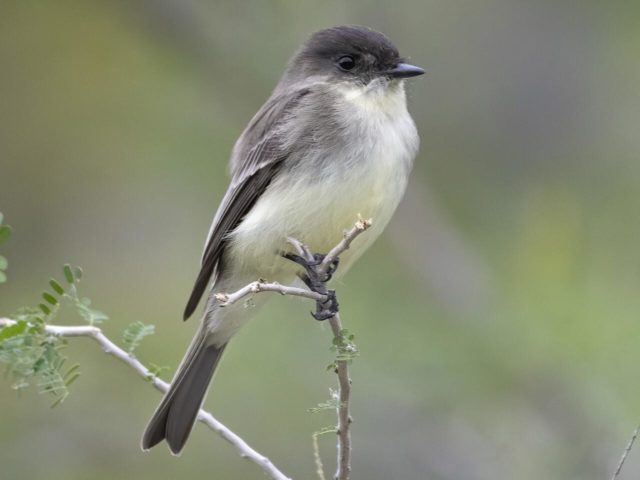
This early spring migrant can easily be identified by its gentle tail-wagging . Commonly found in woodlands and farmlands perched up on a tree branch (usually at the top of dead branches). Its color can be a little dull, with dark wing feathers and a light olive green belly, but look out for this flycatcher as it swoops down from branches in search of a good meal (mainly insects). Listen Up: the phoebe is very easy to identify by its well-enunciated, emphatic “fee-bee” song.
Eastern Towhee
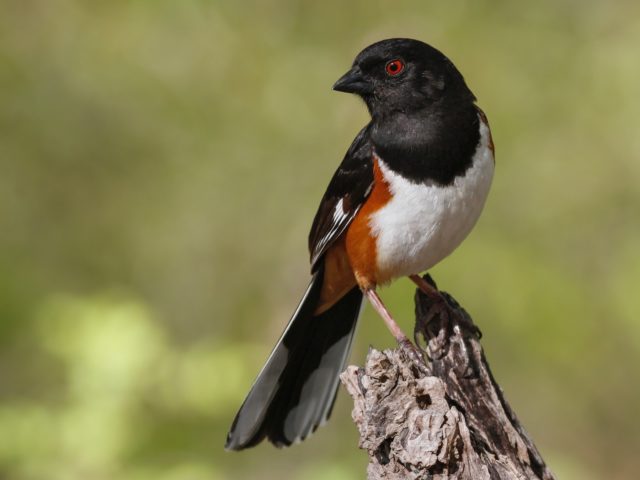
Despite its relatively large size and striking colors, the eastern towhee can be difficult to spot because it spends so much time searching for food in shrubby areas on the forest floor. They scratch around on the forest floor, searching for seeds, fruits, and insects, and sometimes eating small snakes or amphibians. The eastern towhee is known for its distinctive call, which sounds a little like the phrase “drink your tea!”
Broad-winged Hawk

The broad-winged hawk spends the winter in South America, and in the fall these birds will migrate back south in a large flock called a kettle. For now, look for these relatively small hawks in deciduous forests near wetlands or meadows. The pale wings and stripes on their tails can help you distinguish them from some of our other hawk species.
